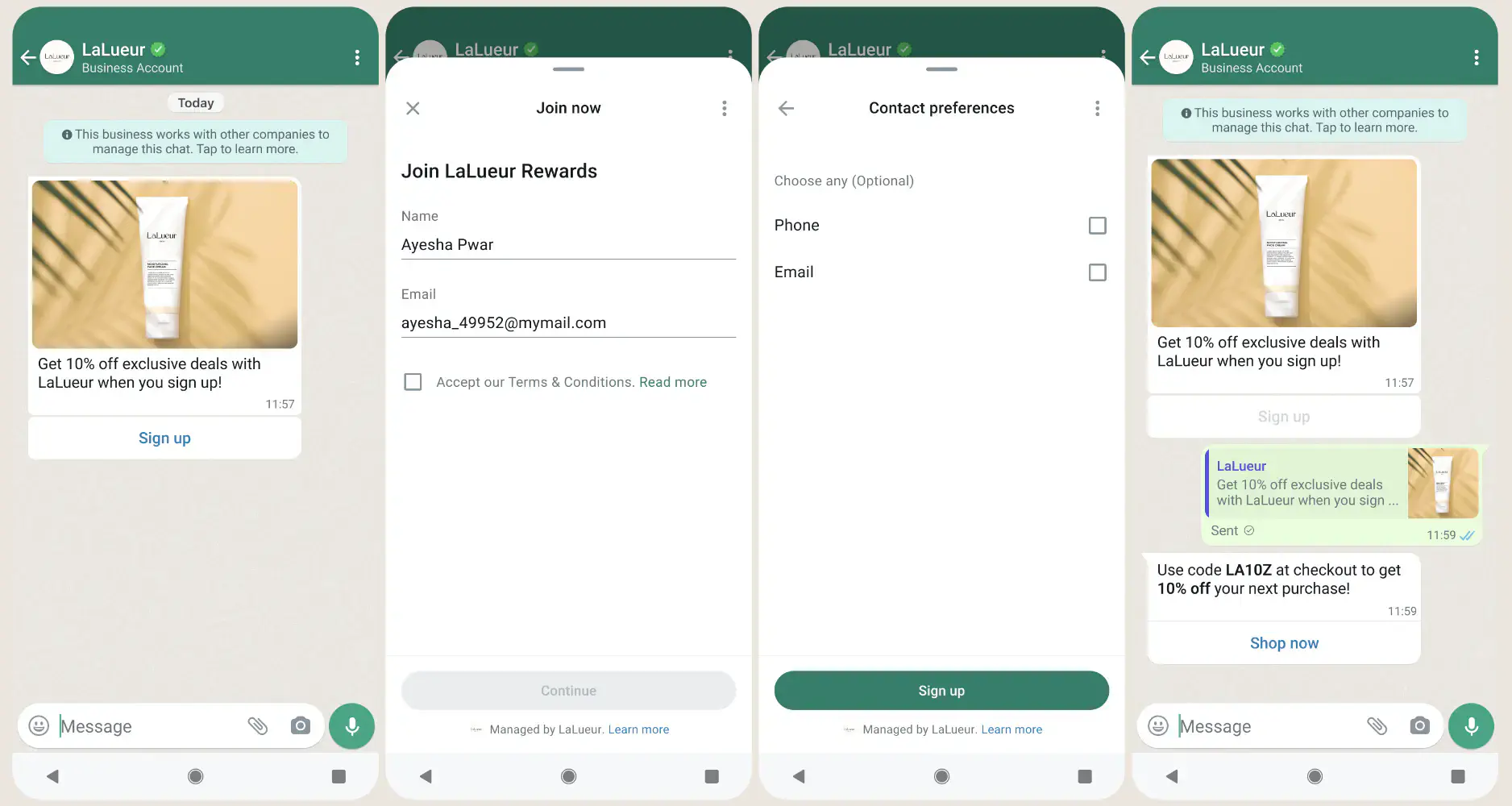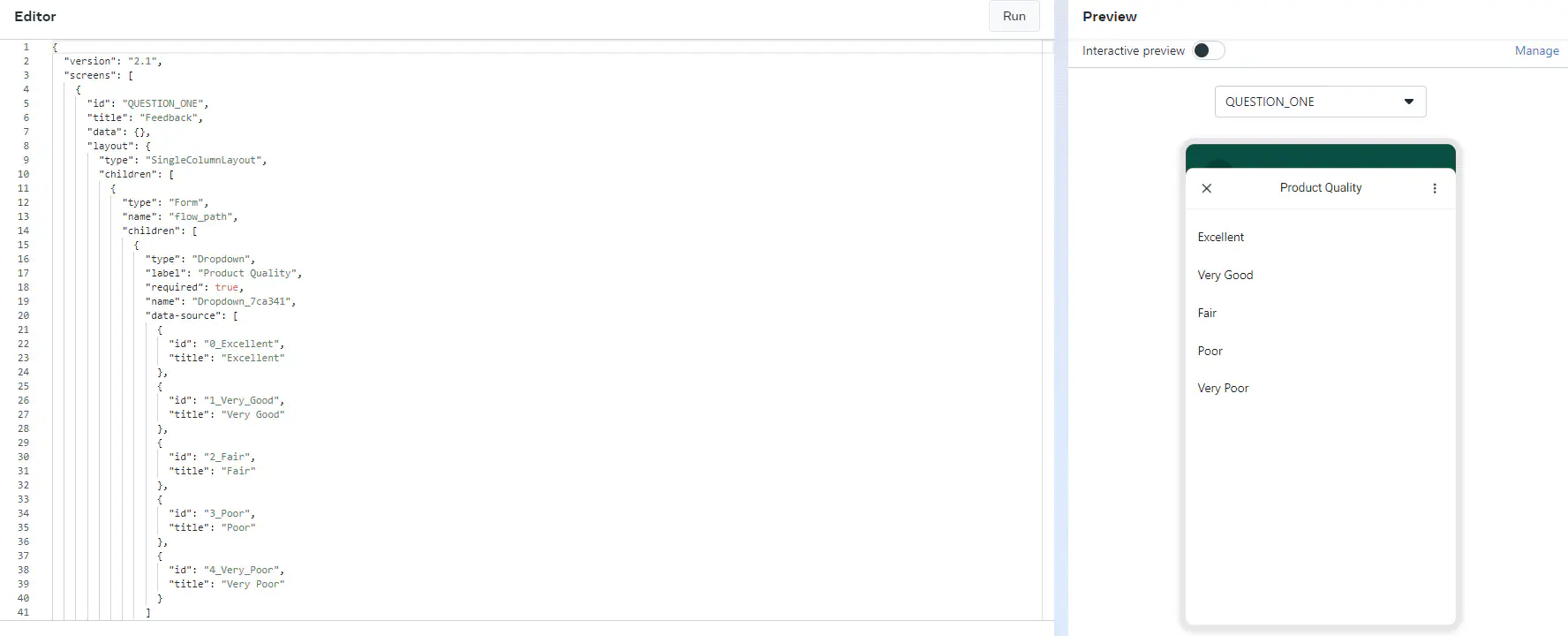WhatsApp Flows for ECommerce: Complete Guide [+ FREE Templates]
![WhatsApp Flows For eCommerce: Complete Guide [+ FREE Templates]](https://learn.rasayel.io/en/blog/whatsapp-flows-for-ecommerce/cover_hu12633937669474783485.webp)
Are you grappling with dropping engagement rates, fragmented communication channels, or inefficient sales processes online? If so, read this guide on how to use WhatsApp Flows for eCommerce. Learn how this innovative feature can alleviate these common pain points and even transform them into strengths.
In the bustling sphere of this industry, communication stands as the cornerstone of customer interaction and engagement. eCommerce businesses increasingly lean on WhatsApp, the most popular messaging app in the world, for its vast reach and simplicity. With Flows, the latest feature in WhatsApp’s arsenal, you have a powerful tool to streamline communication and elevate your sales, while improving customer engagement and satisfaction.
Let’s explore how WhatsApp flows can benefit your eCommerce business:
Importance of WhatsApp Flows for eCommerce
WhatsApp Flows offers a dynamic approach to enhancing customer-business interactions. Think of it as creating a series of steps or a ‘flow’ that guides your customers through various tasks right within their WhatsApp messages. This could be anything from collecting customer feedback to appointment booking or registration.
For eCommerce, WhatsApp Flows unlocks several key functionalities:
- Lead Generation: Capture leads effectively through personalized conversations.
- Registration & Sign-In: Streamline processes within WhatsApp for user convenience and reduced drop-offs.
- Customer Support: Collect customer information regarding their issues to provide more personalized and effective assistance.
- Feedback & Reviews Collection: Easily collect product reviews and feedback, crucial for business growth and product improvement.
These use cases highlight the potential of WhatsApp Flows in offering end-to-end experiences that are more engaging and efficient. For users, this means smoother task completion and a better overall experience. For businesses, it translates into higher engagement and conversion rates, ultimately improving revenues.
WhatsApp Flows: Use Cases & Examples for eCommerce
From handling support queries to driving sales and gathering feedback, WhatsApp Flows offers many applications tailored to enhance the eCommerce experience. Here’s a closer look at how this tool can be applied in different aspects of eCommerce:
Sales & Marketing
Effective sales & marketing strategies are pivotal for the success of any eCommerce business. WhatsApp Flows offers a unique platform for interactive and direct marketing efforts. Engaging customers through step-by-step activities on WhatsApp can significantly enhance the shopping experience, boost sales, and strengthen brand loyalty.
- Customized Product Recommendations: Creating flows that guide customers through a series of questions, leading to personalized product recommendations based on their responses.
- Engaging Marketing Campaigns: Use interactive elements like quizzes and polls to engage customers in a conversation, making marketing campaigns more interactive and engaging.
- Streamlined Sales Processes: Design flows that assist customers in making purchase decisions, such as choosing product options, confirming order details, or even processing payments within the chat interface.

- Feedback Collection and Analysis: Implement flows that gather customer feedback on products or services, providing valuable insights for business improvement and customer satisfaction.
Support & Queries
Customer support and addressing queries promptly and effectively are key to maintaining customer satisfaction and trust. WhatsApp Flows streamlines these processes by streamlining the process of collecting information on customer queries. Here are key ways in which WhatsApp Flows can be utilized in the area of support and queries:
- Efficient Information Gathering: Utilize flows to quickly collect relevant customer information, ensuring a more tailored and efficient resolution process. This approach helps in reducing wait times and improving the overall customer experience.
- Integration with CRM Systems: Implement flows that work in tandem with CRM systems, offering more informed support based on customer history and preferences.
Feedback & Reviews
By enabling direct and immediate communication with customers, Flows provides you with the opportunity to gather valuable insights and feedback in real time. Here are some ways WhatsApp Flows can be effectively used for collecting feedback and reviews:
- Customer Satisfaction Surveys: Implement flows to conduct satisfaction surveys, helping businesses gauge the overall customer experience and identify areas for improvement.
- Product Improvement Suggestions: Use flows to gather customer suggestions on product improvements or new features, fostering a sense of customer involvement and loyalty.
- Issue Resolution Feedback: After resolving customer support issues, implement flows to ask for feedback on the resolution process, aiding in refining customer service strategies.
Free WhatsApp Flows Templates for eCommerce
Below, you can download some of the most effective WhatsApp Flow templates tailored for eCommerce. Each template is crafted to address specific needs within the eCommerce journey, ensuring a seamless and engaging user experience.

- Feedback Flow on Product Quality & Shopping Experience
Download this template and use it to collect customer feedback after a purchase or service. It’s a well-designed system that allows you to understand your customers’ experiences and thoughts on product quality, helping you to continuously improve your offerings.
- Return & Refund Flow
Download this template and send it to customers looking to return a product or request a refund. This efficient process manages returns and refunds, ensuring customer satisfaction by making the experience smooth and hassle-free.
- Subscription to WhatsApp Lists Flow
Download this template to enable customers to subscribe to WhatsApp newsletters, updates, or promotional emails. It’s an excellent tool for keeping your customers engaged and informed about new products, sales, or company news.
Best Practices for WhatsApp Flows in eCommerce
To reap the maximum benefits, integrating WhatsApp Flows should be done thoughtfully. These guidelines ensure that your implementation of WhatsApp Flows meets and exceeds customer expectations while streamlining your business operations. Here are some WhatsApp Flows best practices to consider:
- Prioritize User Experience: Design flows that are intuitive, user-friendly, and add value to the customer’s journey.
- Balance Automation & Personalization: While automation is efficient, ensure there’s a personal touch to make customer interactions feel genuine and tailored.
- Regularly Update & Optimize Flows: Continuously analyze the performance of your flows and make necessary adjustments for improvement.
- Ensure Compliance & Privacy: Respect customer data privacy and respect the WhatsApp Business messaging policy in your communications.
- Integrate Flows with Other Business Systems: For a cohesive experience, ensure your WhatsApp Flows are well integrated with other business systems like CRM and analytics tools.
- Test & Refine: Regularly test different flows for effectiveness and refine them based on customer feedback and interaction data.
Conclusion
WhatsApp Flows can truly change the dynamics of communication in the eCommerce industry. By adhering to best practices such as prioritizing user experience, balancing automation with personalization, and ensuring compliance with privacy standards, you can optimize your WhatsApp Flows for better engagement.
The free downloadable WhatsApp Flows for eCommerce provided in this blog post are a great starting point for any eCommerce business looking to implement this powerful feature.
As we move forward, it’s clear that embracing WhatsApp Flows is key for online businesses aiming to stay ahead in an increasingly digital marketplace. By doing so, they can unlock new opportunities for growth and customer engagement, thereby shaping the future of eCommerce communication.
Frequently Asked Questions
The flow feature of WhatsApp, known as WhatsApp Flows, allows businesses to create automated, interactive communication sequences. These are used to engage customers in a structured manner, helping in tasks like collecting information, guiding through purchases, or booking appointments, all within the WhatsApp platform.
To use WhatsApp Flows, start by defining the objectives you want to achieve, like customer support, sales, or feedback collection. Then, design a series of automated messages and interactions that guide your customers through these objectives. These flows can be set up through the WhatsApp Business API or tools that support WhatsApp integration.
They offer real-time, interactive communication ideal for eCommerce needs. Benefits include improved customer support, personalized marketing, efficient order processing, and valuable insights from customer interactions.
Key practices include focusing on user experience, balancing automation with personalization, continuously updating and optimizing flows, ensuring data privacy compliance, and integrating flows with other business systems.
Yes, they can be integrated with various business systems like CRM and analytics tools for a cohesive operational experience. This integration enhances customer support and provides more informed interactions based on customer history and preferences.
Success can be measured through metrics like customer engagement rates, query resolution times, sales conversion rates, and customer satisfaction scores. Regular analysis of these metrics will help in optimizing the performance of your flows
Creating an eCommerce store on WhatsApp involves setting up a business account on the WhatsApp Business app. You can showcase your products or services in a catalog, communicate with customers, and use features like automated messages to manage orders. The key is to integrate your product offerings into your WhatsApp business profile effectively.
WhatsApp can be used for business automation by setting up automated greetings, responses to frequently asked questions, and customized messages based on specific triggers or customer actions. This helps in managing customer interactions efficiently and ensures timely responses, enhancing the overall customer experience.
More advanced and powerful automation is possible with the WhatsApp Business API which allows for integration with various business tools and systems, deploying chatbots and creating more intricate and responsive customer interaction sequences.
While WhatsApp itself is not an eCommerce platform, it can be a powerful tool for eCommerce businesses. Through its business app and API, WhatsApp allows businesses to showcase products, interact with customers, process orders, and provide support, effectively complementing an eCommerce platform.
Learn more
If you'd like to learn more about how WhatsApp can help you grow your business, please reach out to us on WhatsApp at +13024070488 (Click to chat now).
We also offer a free consultation session where we review your use case, answer any questions about WhatsApp, and help you build a strategy to make the best out of the platform. Book a call with us here. We'd love to speak with you:
Book a call: Europe, the Middle East, and Africa
Book a call: LATAM
Curious about Rasayel? Schedule a demo today.

Miodrag is a seasoned WhatsApp marketing expert with over 15 years of experience in B2B sales and communication. Specializing in the use of WhatsApp Business API, he helps businesses use WhatsApp’s marketing features to grow their sales and improve customer engagement. As one of the early adopters of WhatsApp Business, Miodrag has a deep understanding of its tools and strategies, making him a trusted authority in the field. His insights have helped many businesses with their communication strategies to achieve measurable results.




